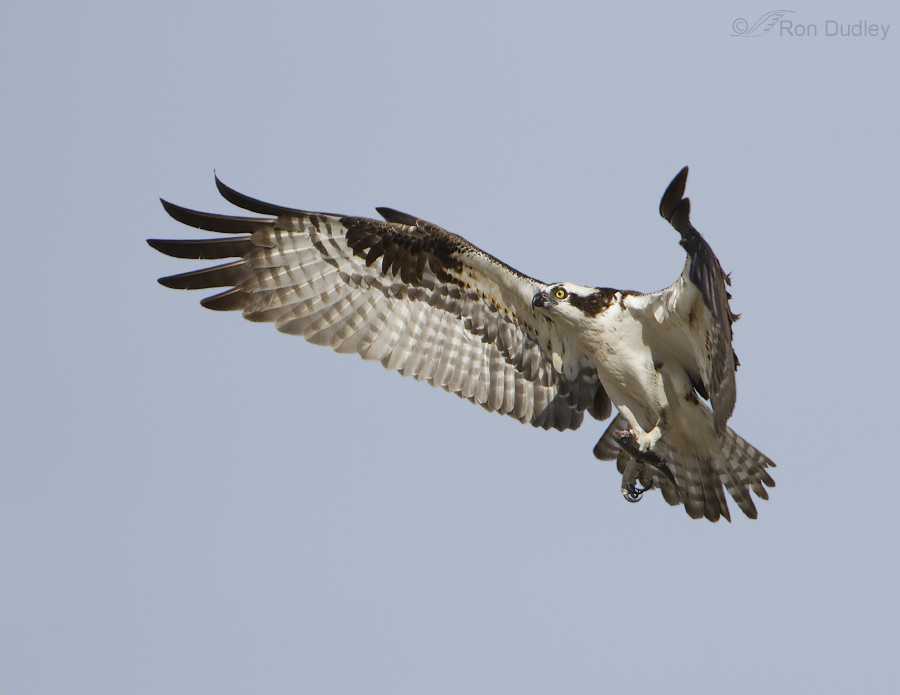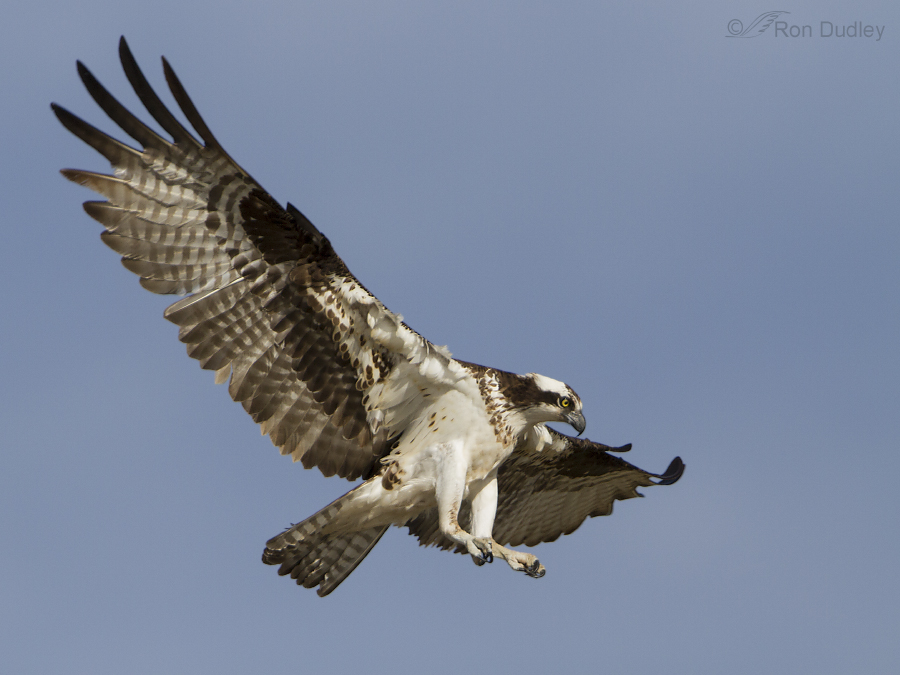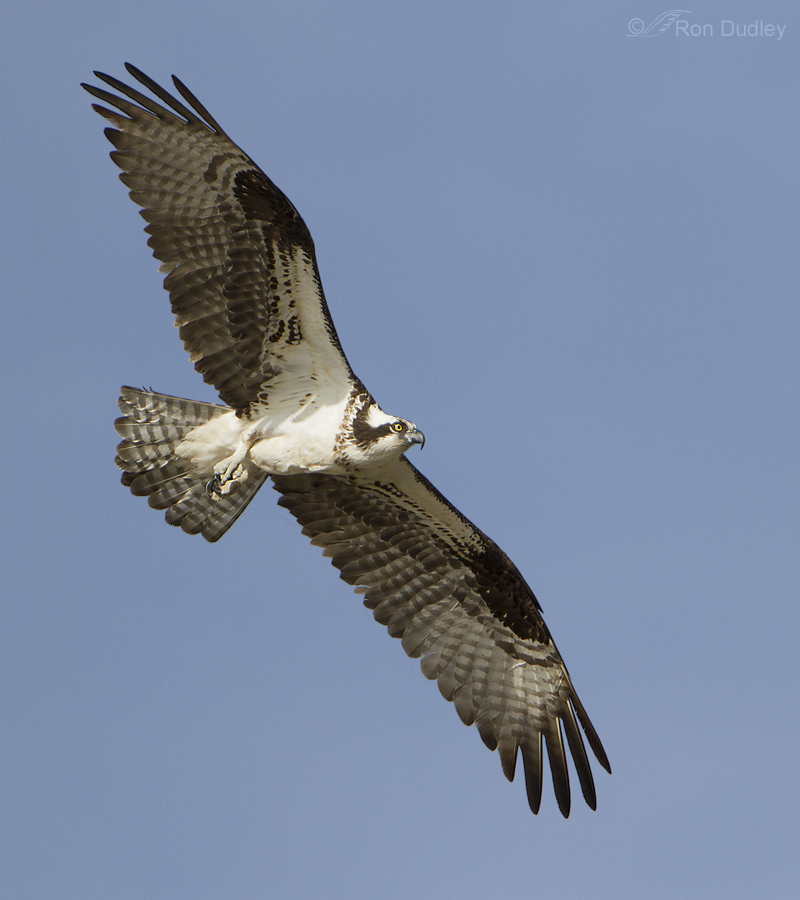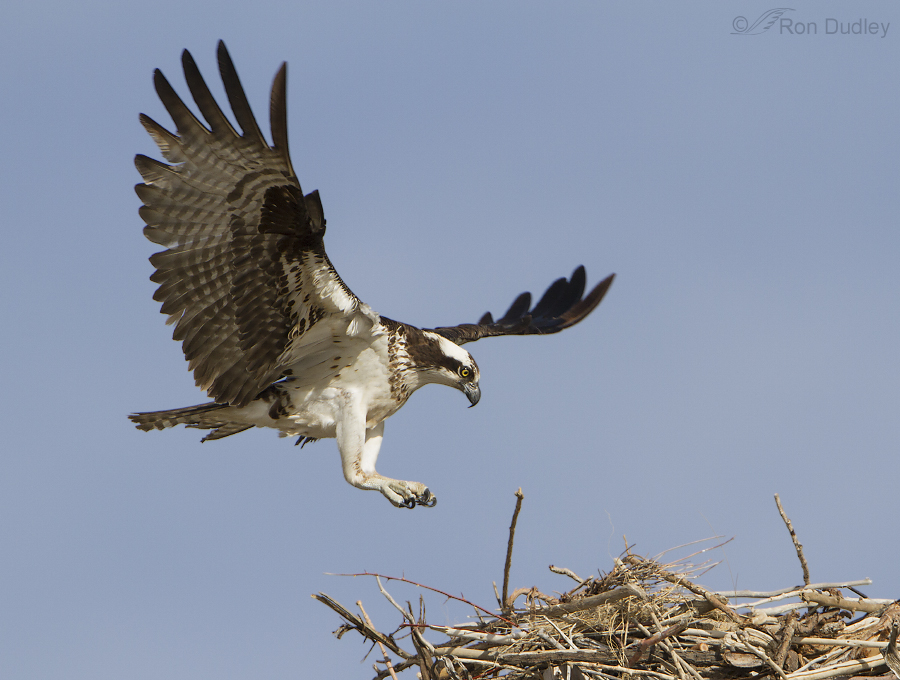The Osprey is a species that I’ve only had a handful of opportunities with but last spring I found a cooperative nesting pair at Flaming Gorge.
In my mind this is a true miracle species because it has arisen Phoenix-like from the ashes of its own demise. During the 1950s-1970s their populations crashed dramatically, largely due to the effects of DDT and other persistent pesticides in the environment which caused severe eggshell-thinning and poor hatching success. But when those chemicals were banned the Osprey made a miraculous comeback and today their numbers are approaching historical highs.
Part of the reason for that success has been the widespread use of artificial nesting sites. In some areas of North America, 90-95% of all nesting pairs choose these artificial sites over natural ones. The nest of this mated pair was on a pole installed for that purpose close to Flaming Gorge Reservoir.
1/1600, f/6.3, ISO 500, 500 f/4, 1.4 tc, natural light, cloned out a piece of nest platform, not baited, set up or called in
This is most likely the male of the pair (less conspicuous breast band) bringing a small fish in to the incubating female on the nest platform.
1/2500, f/7.1, ISO 500, 500 f/4, 1.4 tc, natural light, not baited, set up or called in
I believe this to be the female coming into the nest.
1/2000, f/7.1, ISO 500, 500 f/4, 1.4 tc, canvas added, natural light, not baited, set up or called in
When the male would bring its mate a fish she would take it to another perch to enjoy her meal as the male took over incubation duties. Here she’s circling the nest on her return.
1/2000, f/7.1, ISO 500, 500 f/4, 1.4 tc, natural light, not baited, set up or called in
The female approaching the nest after a short break from incubation.
1/2500, f/6.3, ISO 500, 500 f/4, natural light, not baited, set up or called in
Here the female is coming into the nest as the smaller male (up to 25% smaller by weight) incubates. The light was a little harsh but I like the inclusion of both birds.
This nesting platform was right next to a parking lot and boat ramp and these birds were acclimated to human activity and not disturbed by my presence.
I’m already planning another trip to “the gorge” this summer. Perhaps two…
Ron







Ron, I helped install about 9 of the nesting platforms for the birds. I live in Manila and have seen a couple of platforms fall into disrepair. Who could we advise of the problems? Also over by Antelope Flats we have a pair of Bald Eagles that have taken over one of the nests for the past couple of years.
I’m not sure who to advise of the problem, Gary. I suspect that the Ashley National Forest offices in Manila could advise you about who’s responsible for those nesting platforms. I know that Hawkwatch International (based here in SLC) installs and maintains some of the kestrel boxes in Utah and perhaps they do similar things for other raptors.
I’m familiar with that Antelope Flats nesting platform you mention and have photographed those eagles for a couple of years now (from very far away). If I remember correctly they successfully raised at least one chick (it seems like there were two of them) a couple of summers ago.
Beautiful photos! Ospreys were the first birds I really observed — in the early ’60s a pair nested every year near us (eastern Long Island, NY) but didn’t produce any young. It’s wonderful to revisit the area now and see over a dozen active nests.
What a change over the years, Naomi. I’ll bet the reason that nest repeatedly failed was the effects of DDT and other pesticides.
Sper series and very interesting!
Thanks, Charlotte.
What stunning looking birds. Do you know why they seem to prefer the artificial nesting sites? Convenience? Or has human activity made natural nesting sites much rarer?
Elephant’s Child, it has been suggested that an increase in predator populations (particularly raccoons) might be responsible for part of their preference for artificial nesting sites since many of them are “predator proofed”. Another reason may be the loss of shoreline trees due to development near water (osprey prefer nesting sites close to water).
A naturalist here in Ohio told me that Osprey are preyed upon by Great Horned Owls. The Owls hunt at night by swooping down from a higher perch to take their prey. The Osprey nests poles are places at a height and distance from the shoreline so as to be out of the “glide path” of the owls (400 ft?). It could be that there just are not as many natural nesting places as ideally situated as the artificial ones.
Ron, which lens are you shooting with for this sequence and how much of a crop was there for these final images?
Rich, I was using the Canon 500 f/4, mostly with an attached 1.4 teleconverter. That info is in my techs at the bottom of each image. The crops ranged from 50% of original image to about 70%. I rarely post anything cropped more than 50% (and then only for documentary purposes).
These birds are indeed numerous. When we were in Florida and Texas in January, they were everywhere, I assume either wintering or on route to nesting sites. What a glorious group of photos!
Thanks, Tana. I remember seeing my first Osprey (with a fish held in the traditional position for them) on a remote and beautiful lake (Pinkut Lake) in northern British Columbia and I was simply blown away. There were even loons calling in the background. This was in the early 80s when they were beginning their comeback so there were still very few of them. An experience I won’t ever forget.
Great job Ron! There is a Power Company nest platform out where I live(PG&E), and the locals continue to call them Bald Eagles…..I’m just happy they nest where I can see them.
I’m surprised by how many folks don’t recognize the osprey – my experience has been similar to yours in that regard.
I’ve also noticed that the ospreys like the artificial nesting site. I’ve seen that at the Verazano bridge going from the mainland out to Assateague Island in Maryland. I’ve also seen it as we cross Currituck Sound on the Wright Memorial Bridge in North Carolina, where the old power poles have been re-purposed with nesting platforms. Usually at least half a dozen of those are in use. I’m hoping we’ll get back to Flaming Gorge this summer, so thanks for the heads up about looking for ospreys. Gorgeous photos, as always.
Who knows, Susan – maybe we’ll cross paths at “the gorge”. Stranger things have happened…
Magnificent! One of my favorite birds–I am always thrilled to see one and I can only imagine how thrilling it must have been for you to see and photograph these two–and to catch the male bringing a fish to his mate! It is a dream of mine to someday photograph an Osprey fishing sequence…someday. One of my very favorite bird paintings is Robert Bateman’s “Osprey in the Rain.” Thank you for sharing these wonderful images.
I hope we both get that fishing sequence one day, Sharon.
Great images Ron. My frustration with the Osprey is beyond words. I lived in a place with lots of them. The problem really was with their altitudes. They nested on very high lamp poles, and by the lakes, they dwelled in totally inaccessible areas. One thing is for sure: they have one of the most specialised claws in raptors; I saw them fly off with fish the same size or bigger than they were, I could not believe it.
I often have similar frustrations with them, Maria. Crappy, high perches and too far away. But I don’t see them much either.